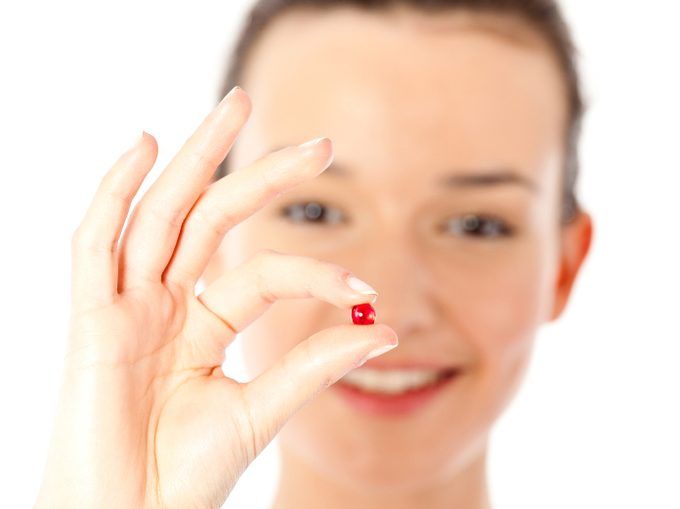Do We Need a ‘Female Viagra’?
Ladies, the female version of Viagra may be on its way. The question is, do we really need it?

Update: On August 18 (2015), the U.S. Food and Drug Administration officially approved Addyi (flibanserin) to treat hypoactive sexual desire disorder in women.
—
Earlier this month, a panel of expert advisers to the U.S. Food and Drug Administration (FDA) endorsed filbanserin, a drug meant to boost women’s sexual desire.
But unlike Viagra, which causes an erection by increasing blood flow to the penis, filbanserin acts on the brain’s neurotransmitters to boost dopamine and norepinephrine, two chemicals associated with love and arousal. The little pink pill, developed by Sprouts Pharmaceutical, was actually first tested (but not approved) as an anti-depressant, and repurposed when women reported increased sexual satisfaction.
In the most recent round of testing, women taking filbanserin daily reported an increase of up to one more sexually satisfying event per month.
If filbanserin is approved, (the FDA will make its final decision in August), it will be the first drug on the market to treat hypoactive sexual desire disorder, a condition described as ‘a deficiency or absence of sexual fantasies and desire for sexual activity that causes marked distress or interpersonal difficulty.’
What’s taken so long to get a libido booster for women? ‘It is not that libido problems in women have been resistant to treatment,’ explains Jim Pfaus, a psychology professor at Concordia University in Montreal who conducts research on sexual behavior. ‘It is that the FDA has been resistant, first to the idea that low sexual desire in women was an unmet medical need, and second that a drug might actually stimulate desire, much like a sexual priming cue would do. It took a while (and a lot of political maneuvering) to get them on board with the idea.’
Proponents of the drug hail the FDA panel recommendation as a victory for women who have waited long enough for their sexual health to be taken seriously. But as with so many issues relating to female sexuality, this purported desire drug comes with controversy.
Filbanserin has been rejected by the FDA twice before, and even the most recent endorsement comes with safety concerns about side effects, including low blood pressure and fainting, especially when combined with alcohol or other drugs.
Critics of the drug argue that its approval will lead to overprescribing for a problem that may not exist, and that pathologizing female sexuality will put more pressure on women to perform to unrealistic standards. In the Washington Post, Cindy Pearson, executive director of the National Women’s Health Network, wrote:
‘Certainly, low libido is a real and truly distressing condition for some women. But we don’t know what causes it and how often it occurs. We don’t know if it manifests differently in lesbians and straight women, or in premenopausal and postmenopausal women. These are things we need to address before rushing a libido drug onto the open market for wide consumption.’
Of further concern, say critics, is that a Sprout-sponsored campaign called Even the Score, which advocates for equality in sexual health, may have been influential in the FDA panel’s recommendation.
If it’s approved in the States, we could potentially see filbaserin make an appearance in Canada, says Pfaus. ‘Canada typically follows the U.S. by a lag time of six months to a year, depending on whether a notice of intent was filed with Health Canada,’ he explained via email. ‘I cannot imagine that Sprout did not do that, given the ‘market’ in Canada is similar to that in the U.S.’
Female sexual desire is indeed complex, and low libido can be extremely distressing for women who otherwise love their partners. So what’s your take? Will filbanserin level the playing field for women when it comes to sexual health?




